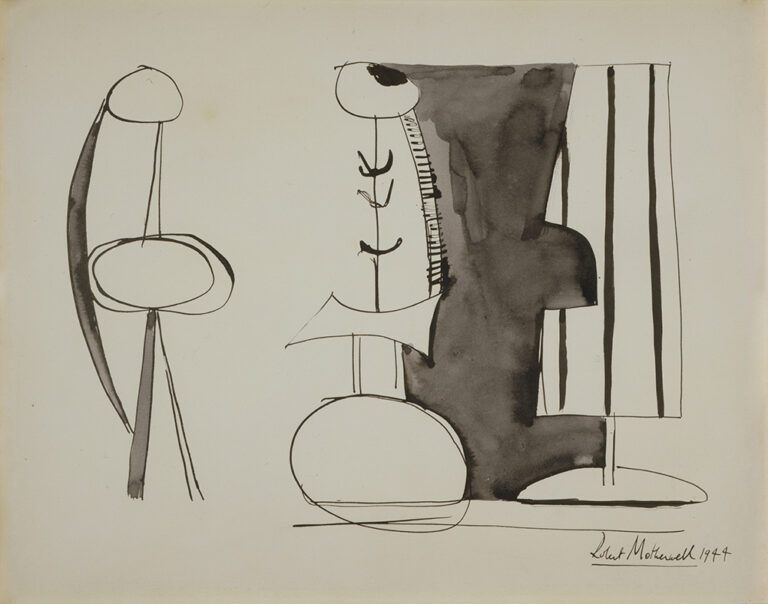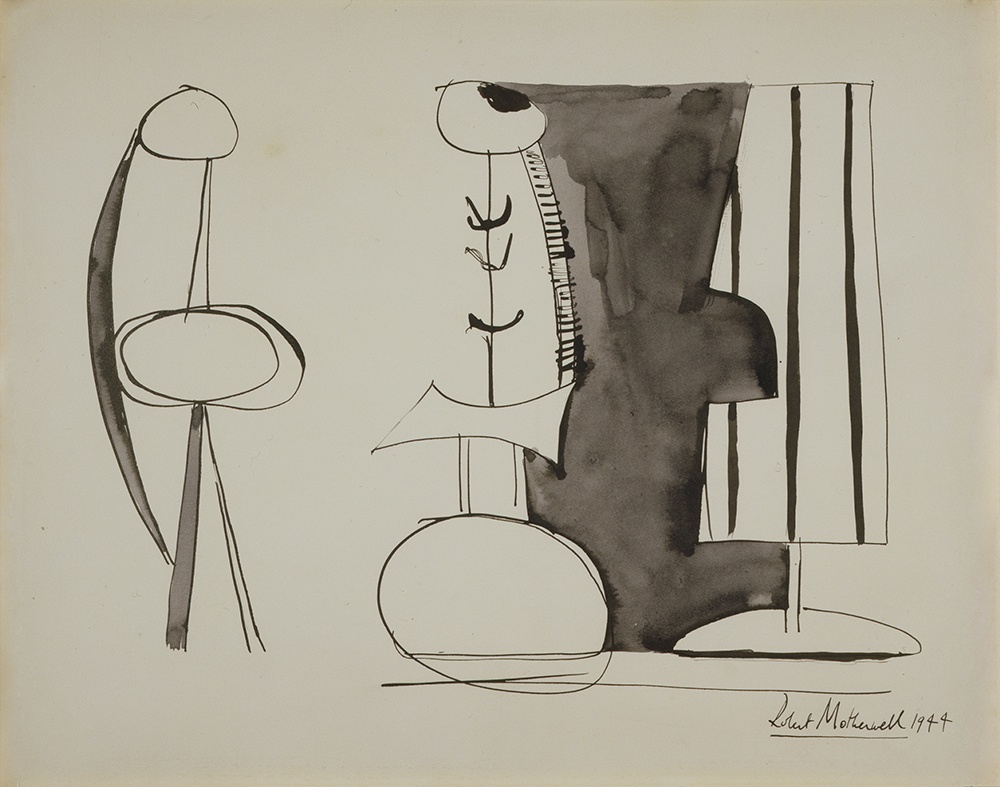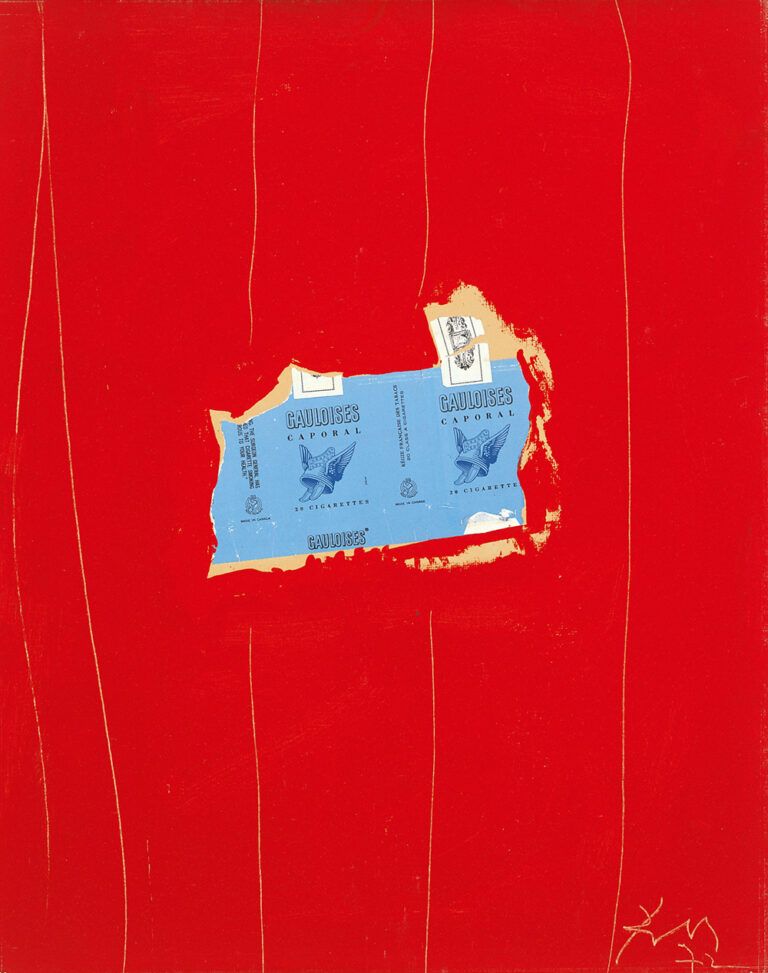Your browser is out-of-date!
Update your browser to view this website correctly. Update my browser now
Robert Motherwell and French Architect Pierre Chareau

Pierre Chareau in Motherwell’s Studio
French architect and interior designer Pierre Chareau spent the final years of his life in exile and relative obscurity in New York. Despite being a member of the prestigious Société des Artistes Décorateurs (an extraordinarily talented group of artists who specialized in creating unified interiors) in France, traces of his final years spent in America are limited and his American designs have received relatively little attention.

Interior of the East Hampton Quonset hut
He designed two built works in the United States: La Colline in Spring Valley, New York for the pianist Germaine Monteux and the writer Nancy Laughlin in 1950; and Robert Motherwell’s East Hampton studio and home in 1947.
Motherwell was introduced to Chareau and his wife Dollie by Anaïs Nin in the summer of 1944. Motherwell connected with Chareau in part because he believed that they both worked using “the collage principle, inspired by materials,” in their respective fields.
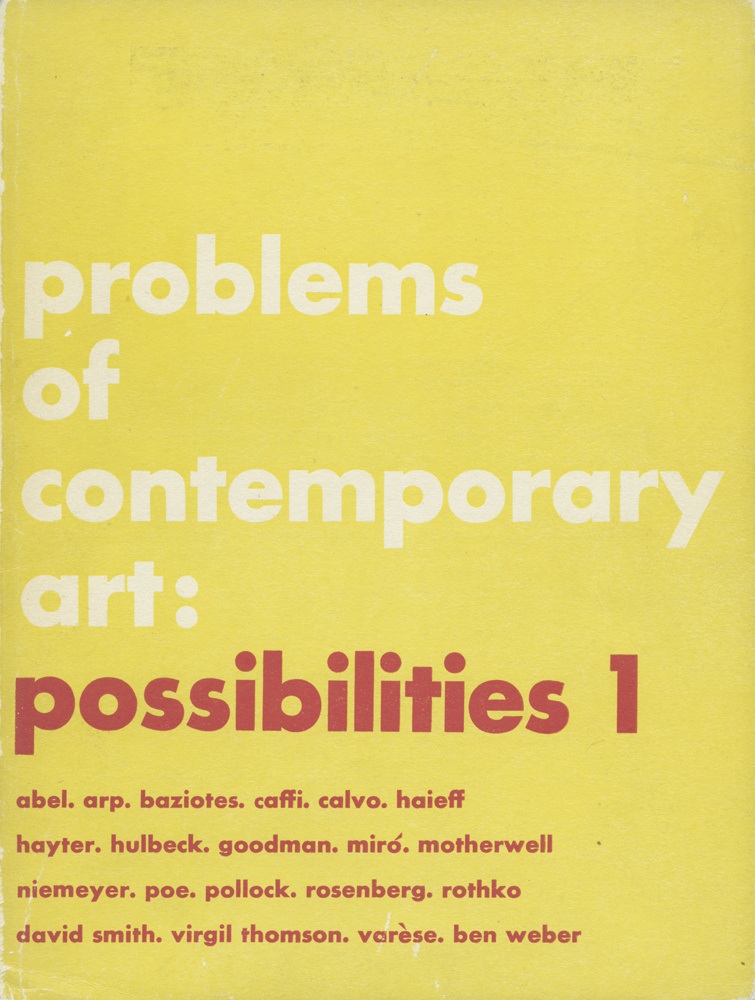
In 1946 Motherwell asked Chareau to serve as the architecture editor for his review Possibilities, which he coedited with the critic Harold Rosenberg and the composer John Cage.
In 1947, Motherwell asked Chareau to design a house and studio on his two-acre property in East Hampton. For his fee, Chareau received a small piece of the Motherwell property on which he built a cottage that followed the so-called “primitive hut” concept later used by the French architect Corbusier in his Petit Cabanon.
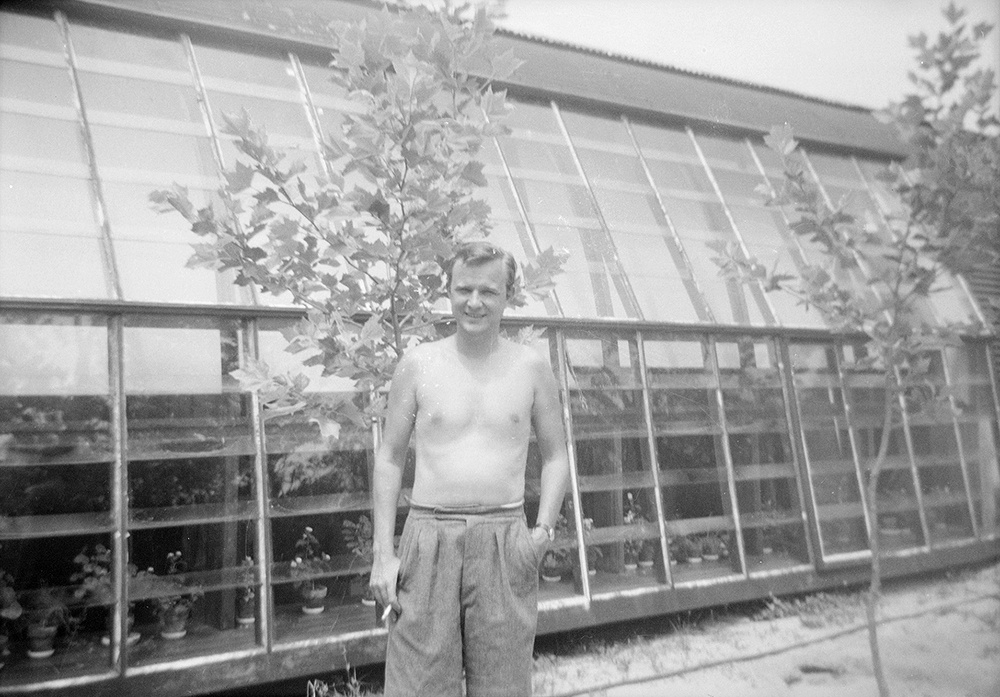
The Motherwell home and studio were built using surplus Quonset huts and utilized low cost materials like an industrial greenhouse window; concrete blocks for the retaining walls; plywood; and brick and oak logs for the floor.
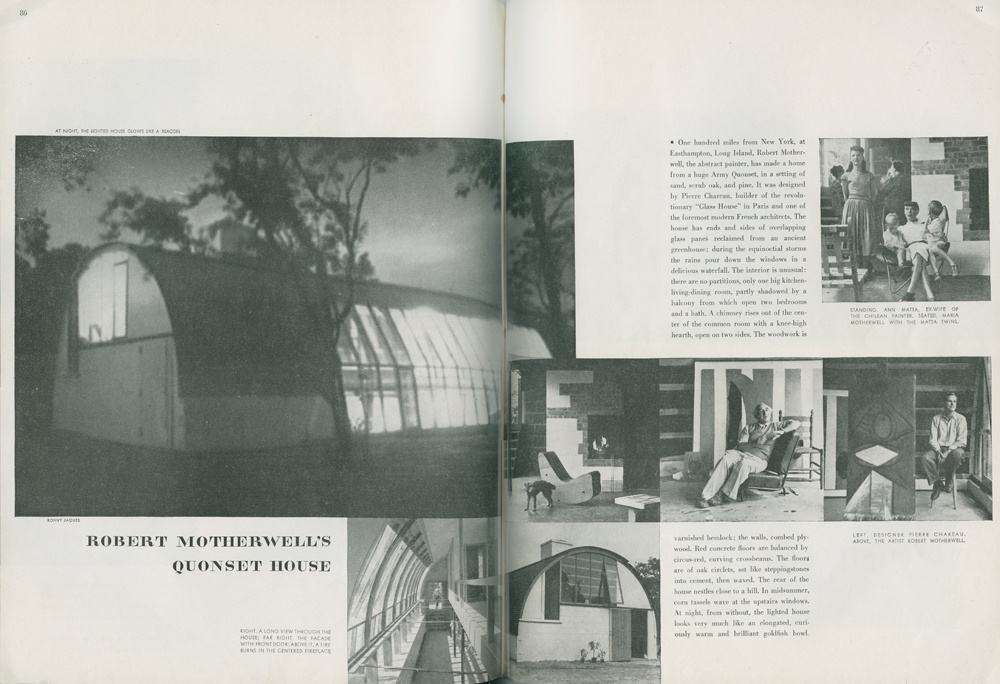
The house gained some notoriety when it was photographed for Harper’s Bazaar in June of 1948. The photographs in the magazine show Chareau and the Motherwells as well as Anne Clark, and her young twin sons (including a young Gordon Matta-Clark) in the different rooms around the house.
The Chareaus were early collectors of Motherwell’s work and owned several of his paintings and drawings, including Line Figure in Beige and Mauve, 1946 and Constructed Figures, 1944 both of which are on display at the Jewish Museum until March 26.


